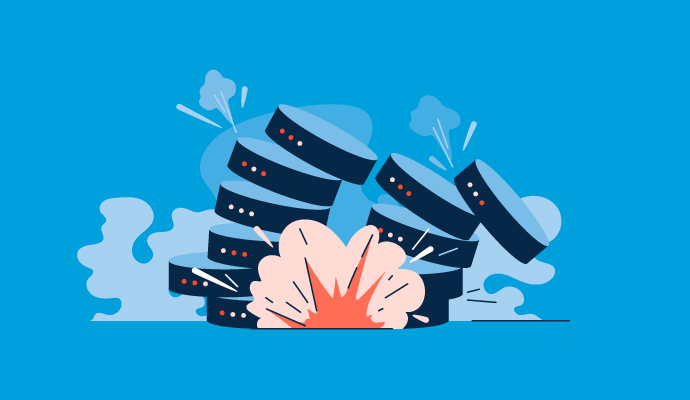Exploring the Significance of Data Destruction in the Context of Computer Safety And Security Solutions and Protecting Confidential Data
In an era where data violations are progressively usual, the importance of reliable information damage can not be overemphasized. What strategies can organizations execute to enhance their information damage protocols?
Comprehending Data Devastation
Information devastation is a vital element of computer system safety that involves the permanent elimination of data from storage tools to stop unauthorized accessibility and possible information breaches. In an increasingly electronic landscape, companies encounter enhanced threats linked with delicate details being incorrectly accessed or made use of. Efficient information devastation safeguards against these dangers, making certain that private dataâEUR" such as client info, copyright, and financial recordsâEUR" can not be recovered after disposal.
Recognizing the value of information devastation extends past mere compliance with legal and governing structures; it is important for maintaining business stability and depend on. When data is improperly taken care of or inadequately destroyed, the consequences can be serious, consisting of monetary loss, reputational damage, and legal liabilities.

Methods of Data Removal

One widespread method is data wiping, which includes overwriting existing data with random patterns numerous times. This technique renders the original data irretrievable, making it a popular choice for companies looking for to protect confidential information.
Another method is degaussing, which makes use of an effective magnetic area to interfere with the magnetic domain names on storage space tools, efficiently getting rid of the information. This strategy is particularly reliable for magnetic media but is not applicable to solid-state drives.
Physical devastation is an additional durable technique, crushing or involving the shredding of storage gadgets. This technique guarantees that data recovery is virtually impossible, making it perfect for highly delicate information.
Lastly, security can serve as a corresponding technique to data obliteration. By encrypting data before deletion, companies can add an additional layer of safety and security, ensuring that even if residues are recuperated, they remain hard to reach without the decryption secret. Each approach should be selected based upon the level of information sensitivity and the details protection requirements of the company.
Legal Conformity and Data Safety
Organizations must navigate an intricate landscape of legal demands associated with data protection, especially after implementing techniques of information removal. Numerous policies, such as the General Information Protection Guideline (GDPR) and the Health Insurance Coverage Transportability and Responsibility Act (HIPAA), enforce strict standards on how companies should take care of and get rid of of delicate information. Failure to adhere to these guidelines can bring about significant legal consequences, consisting of significant penalties and reputational damage.
Data destruction processes need to be thoroughly recorded to show compliance with applicable legislations and criteria. This documents not just works as evidence of adherence to lawful obligations however additionally shows a dedication to guarding sensitive information. Organizations must also establish clear plans regarding data retention and damage timelines, making sure that data is not held longer than required.

Furthermore, routine audits and assessments of information damage practices are vital to maintain compliance and adjust to developing lawful structures (data destruction). By proactively addressing legal requirements, companies can alleviate dangers related to information breaches and show their commitment to information safety and security. Ultimately, focusing on lawful compliance in data devastation procedures is not just a regulative commitment, but a basic aspect of a durable information protection approach
Influence On Business Track Record
The online reputation of an organization can be considerably affected by its strategy to data destruction and administration. imp source In today's electronic landscape, where information breaches can occur anytime, the failing to properly take care of sensitive details can lead to serious consequences. Organizations that improperly manage data devastation risk exposing confidential client details, which not just violates privacy legislations yet additionally deteriorates trust among clients and stakeholders.
A damaged online reputation can cause lowered consumer commitment, as customers come to be reluctant to engage with a company that has demonstrated negligence in safeguarding their data. Negative attention surrounding a data violation can have an enduring impact, as possible clients might be hindered by the viewed lack of security. This can bring about a direct decrease in income and market share.
In addition, services that prioritize data devastation as part of their protection technique can boost their track record by showcasing their commitment to safeguarding sensitive details. By adopting rigid data monitoring practices, organizations can not just reduce threats yet likewise position themselves as credible entities in their corresponding industries, consequently reinforcing their overall brand picture.

Best Practices for Secure Disposal
Executing best techniques for safe disposal of information is vital for alleviating risks associated with information violations and guaranteeing compliance with personal privacy policies. Organizations should take on a detailed data disposal policy that describes procedures for both physical and electronic data devastation.
For physical data storage space tools, such as disk drives, shredding or degaussing is advised to stop data recovery. Additionally, organizations ought to keep a chain of safekeeping documentation during the disposal procedure, making sure accountability and traceability of disposed products.
For electronic information, visit using software application that complies with market standards for data wiping is critical. This software must overwrite existing information multiple times, making recuperation essentially difficult. It is also vital to verify the efficiency of the information destruction procedure through audits or third-party evaluations.
Training employees on protected disposal techniques adds an additional layer of safety, as human mistake can often lead to information direct exposure. On a regular basis upgrading and evaluating disposal plans guarantees positioning with advancing guidelines and technical innovations. By implementing these finest methods, companies can dramatically lower the threat of unapproved information gain access to and boost their general information protection strategy.
Conclusion
To conclude, information damage is an essential element of computer safety services that makes sure the security of secret information from unauthorized accessibility. Applying reliable techniques of information eradication, sticking to legal compliance, and identifying the influence on service online reputation are essential components of a thorough information safety technique. By embracing best techniques for protected disposal, organizations can cultivate depend on with clients and safeguard delicate data, eventually adding to an extra safe digital landscape.
In a period where data violations are progressively common, the significance of effective information devastation can not be overemphasized.Information destruction is an important element of computer protection that includes the irreversible elimination of information from storage gadgets to prevent unauthorized accessibility and potential information violations. Organizations must also establish clear plans regarding data retention and devastation timelines, making sure that information is not held longer than necessary.
By proactively dealing with lawful needs, organizations can reduce threats associated with information violations and show their dedication to data safety (data pop over to this web-site destruction). Inevitably, focusing on legal compliance in information devastation procedures is not just a regulative responsibility, yet a basic facet of a robust data safety and security approach